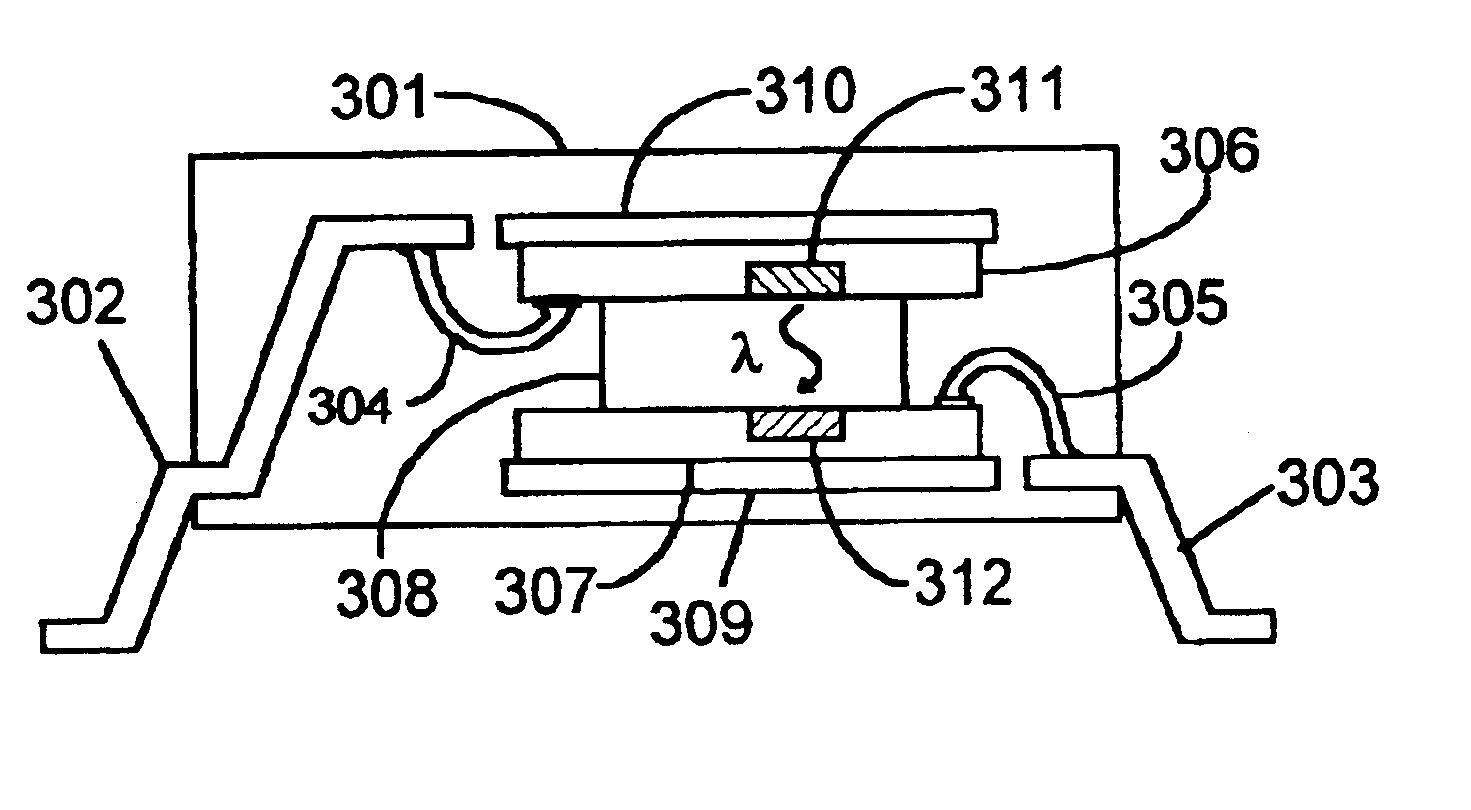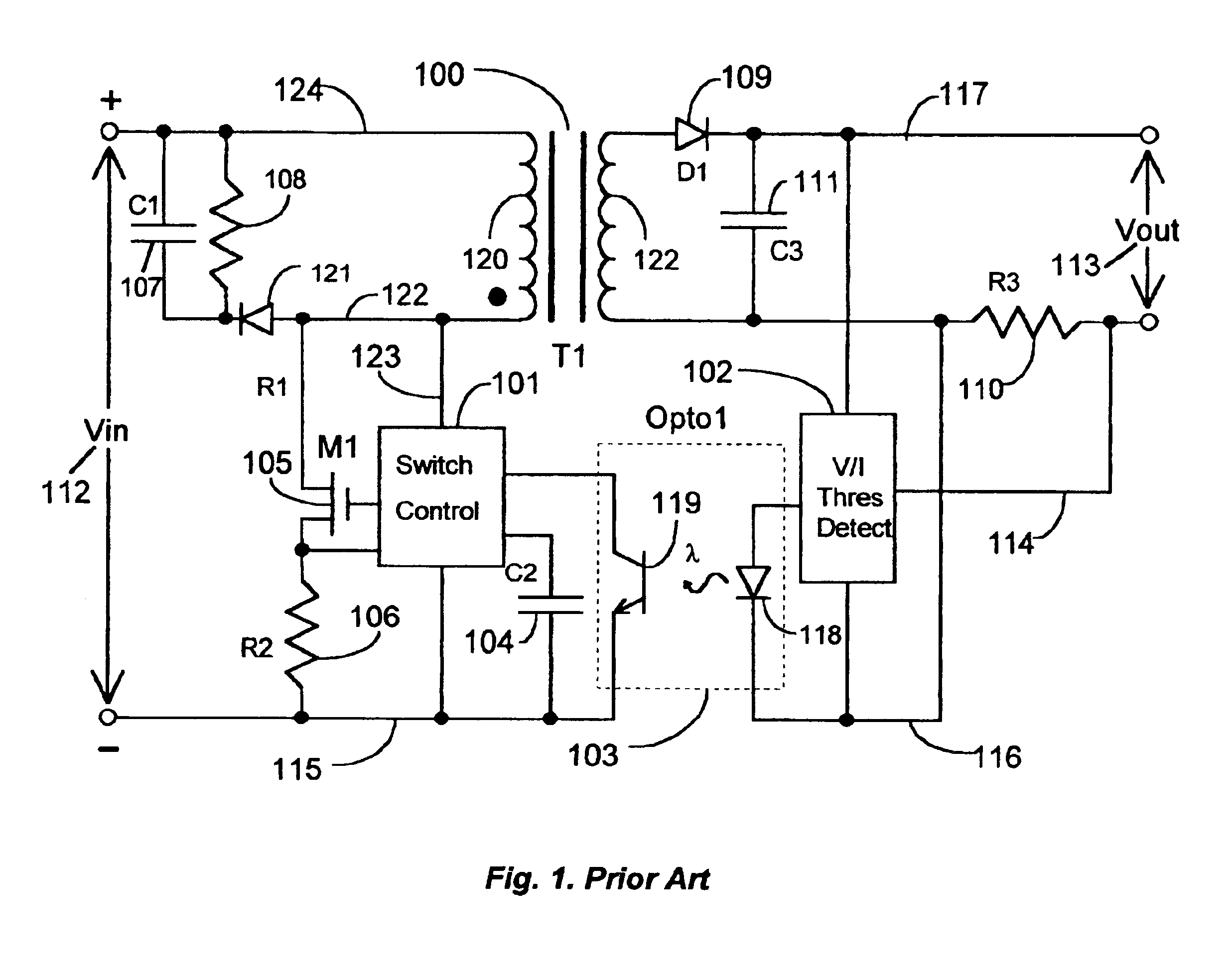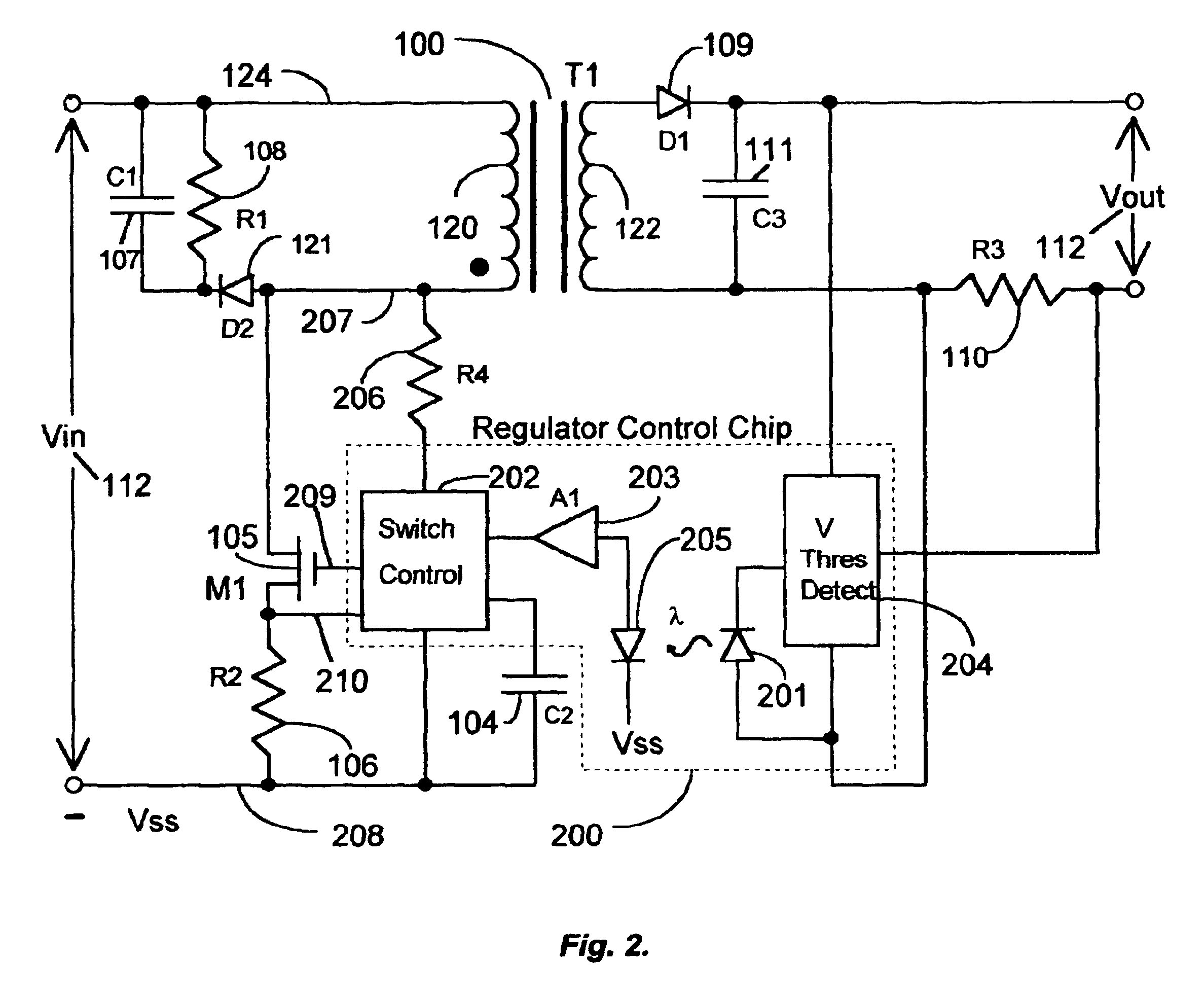Switching power supply circuit using a silicon based LED for feedback
a silicon-based led and power supply technology, applied in the direction of electric variable regulation, process and machine control, instruments, etc., can solve the problems of low frequency, loss, bulky 60 hz transformers, etc., and achieve the effect of reducing packaging cost, reducing board space, and reducing the cost of printed circuit boards
- Summary
- Abstract
- Description
- Claims
- Application Information
AI Technical Summary
Benefits of technology
Problems solved by technology
Method used
Image
Examples
Embodiment Construction
[0025]It is possible to integrate low efficiency LEDs onto silicon. These LEDs may be fabricated by any number of means such as porous silicon, avalanching silicon PN junction, forward biased silicon PN junction, deposited silicon carbide junction, light emitting polymer, or deposited GaAs. In a recent article in Nature (“An efficient room-temperature silicon-based light-emitting diode”, Vol. 410, pp. 192-194, Mar. 8, 2001) a silicon PN junction diode is disclosed with implant induced dislocation loops which efficiently produces light centered at about 1.15 nm. The quantum efficiency is quoted at 10−4 when edge emission is taken into account. This silicon based diode, in combination with a Schottky based silicon diode, can be used to make an all silicon opto coupler, and, more specifically, the flyback power supply integrated circuit described herein.
[0026]Another simple method of realizing a silicon based LED which is consistent with standard silicon processing is the avalanche LED...
PUM
 Login to View More
Login to View More Abstract
Description
Claims
Application Information
 Login to View More
Login to View More - R&D
- Intellectual Property
- Life Sciences
- Materials
- Tech Scout
- Unparalleled Data Quality
- Higher Quality Content
- 60% Fewer Hallucinations
Browse by: Latest US Patents, China's latest patents, Technical Efficacy Thesaurus, Application Domain, Technology Topic, Popular Technical Reports.
© 2025 PatSnap. All rights reserved.Legal|Privacy policy|Modern Slavery Act Transparency Statement|Sitemap|About US| Contact US: help@patsnap.com



